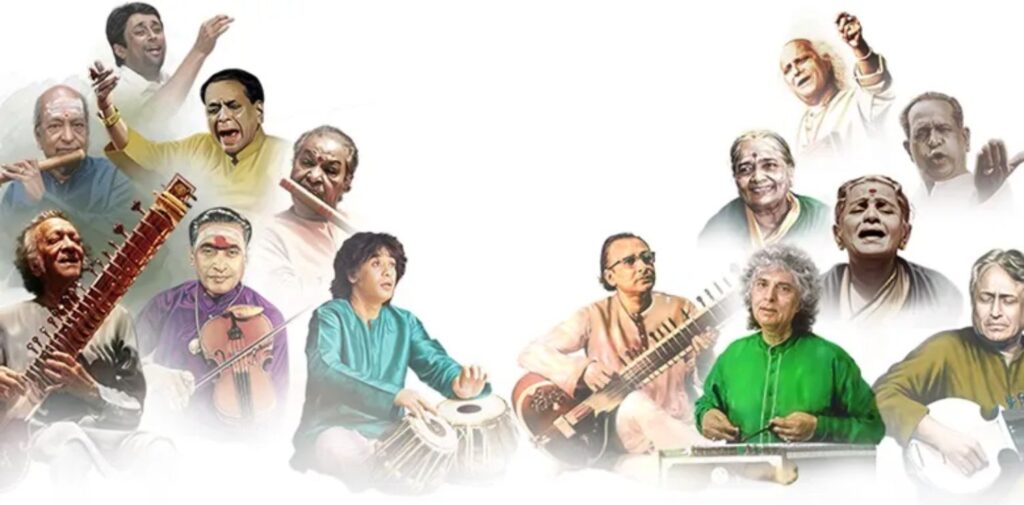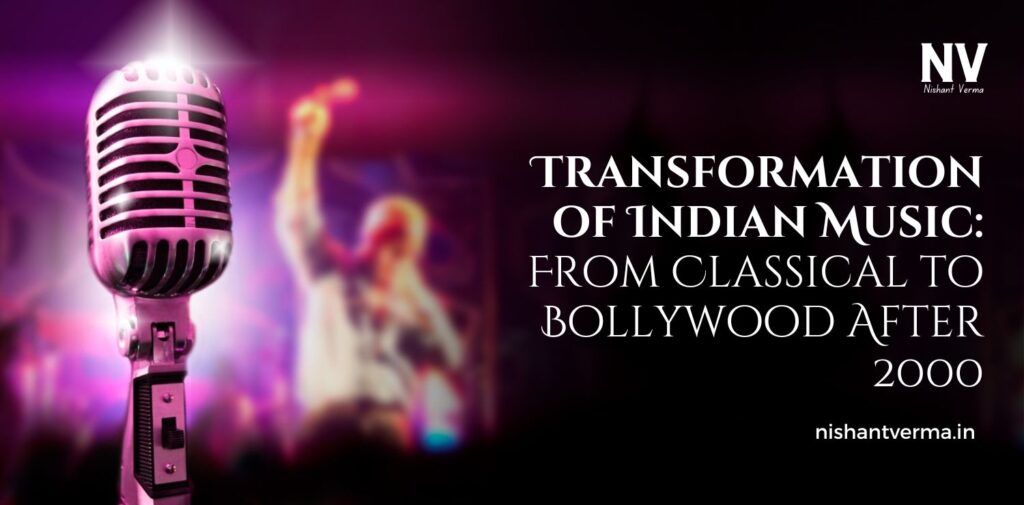Indian music has a rich and diverse history, with its roots deeply embedded in classical traditions that date back thousands of years. However, the landscape of Indian music has dramatically transformed over the last few decades, especially after the year 2000. The rise of Bollywood as the cultural powerhouse, along with the infusion of global music trends, has reshaped the soundscape of Indian music. This article explores the transformation of Indian music, from its classical roots to its modern-day dominance in Bollywood.
Foundation: Classical Music in India
Indian classical music has two major traditions: Hindustani (North Indian) and Carnatic (South Indian). Both traditions have been integral to India’s cultural identity for centuries. Classical music, with its intricate ragas (melodic structures) and talas (rhythmic cycles), was primarily performed in temples, royal courts, and private gatherings. The music was highly revered for its depth, complexity, and spiritual connection.
Classical musicians were considered highly respected, and learning music was an arduous and lifelong journey. The music was deeply rooted in emotions and philosophy, often evoking moods that aligned with the time of day or season. Even today, classical music remains a significant part of India’s cultural fabric, but its role has changed in response to shifting social and technological influences, especially after the 2000s.

The Impact of Bollywood: From Playback to Popularity
Bollywood has always been at the heart of Indian music, with its catchy songs, dance sequences, and vibrant storytelling. However, after 2000, the nature of Bollywood music began to change in response to both domestic and global influences.
Before the turn of the century, Bollywood songs were primarily driven by the voices of playback singers, with music directors such as R.D. Burman, Laxmikant-Pyarelal, and Nadeem-Shravan ruling the scene. The songs were typically rooted in classical, folk, and semi-classical traditions.
However, post-2000, Bollywood music underwent a dramatic shift. The introduction of modern recording techniques, an evolving music industry, and the influx of Western music styles began to influence the sound of Indian cinema. The use of electronic beats, rock, pop, and hip-hop infused Bollywood songs with a fresh energy, attracting younger audiences and catering to the growing demand for globalized content.

Fusion and Experimentation: A New Sound for the New Generation
One of the most significant transformations in Indian music after 2000 has been the rise of fusion music. Fusion combines elements of traditional Indian music with contemporary genres like jazz, rock, electronic, and Western classical music. This blending of styles has led to the emergence of artists and music directors who push the boundaries of traditional Indian sounds while incorporating international influences.
Artists like A.R. Rahman, who became a global sensation after his work in films like Dil Se (1998) and Lagaan (2001), played a crucial role in this transformation. His use of synthesizers, orchestration, and digital effects revolutionized the way music was created in Bollywood. Rahman, along with other composers like Shankar-Ehsaan-Loy, Vishal-Shekhar, and Pritam, helped shape a new wave of music that appealed to both Indian and global audiences.
Fusion music reached a new height with Indian artists blending classical ragas with Western genres. In Bollywood, soundtracks such as Kabhi Alvida Naa Kehna (2006) and Rock On!! (2008) showcased how various genres, from rock to classical to jazz, could coexist in harmony, creating a diverse listening experience.
Rise of Indie Music and Online Platforms
The digital revolution that began in the early 2000s significantly impacted the music industry, allowing independent (indie) musicians to rise in prominence. The growth of the internet and social media platforms like YouTube, SoundCloud, and Spotify has provided a platform for new, non-film music to reach millions of listeners worldwide.
In the past, Bollywood was the dominant force in the Indian music scene, with limited room for independent artists. However, post-2000, independent music began gaining traction, with genres ranging from folk, rock, electronic, and alternative to hip-hop. Artists like Prateek Kuhad, Indian Ocean, and Ravi Shankar’s collaborations with Western musicians like Philip Glass highlighted India’s growing indie music scene.
Streaming services and digital music platforms made it easier for artists to produce and release their music directly to listeners, bypassing traditional music labels. The growing popularity of indie music was also amplified by Bollywood, with many indie songs making their way into soundtracks of popular films.

Bollywood Music Post-2000: A Global Soundscape
Bollywood music after 2000 started reflecting a more globalized sound. While Hindi film songs still dominate the music scene in India, the influence of Western pop, EDM, and international music trends has given rise to new musical genres within the Bollywood soundtrack.
Today, Bollywood music composers experiment with sounds from around the world. The use of electronic dance music (EDM) in Bollywood is one of the clearest examples of this evolution. Songs like Malhari from Bajirao Mastani (2015) and London Thumakda from Queen (2014) have merged the traditional with contemporary music styles.
Moreover, collaborations between Bollywood composers and international artists, such as the work of Diplo and Major Lazer in Phoolon Ka Taron Ka or The Chainsmokers with Bollywood’s own A.R. Rahman, have further bridged the gap between India and the world in terms of musical expression. Bollywood’s international collaborations are introducing Indian music to global audiences while blending it with world music styles, making it even more accessible.
The Future of Indian Music: Blending the Old and the New
Looking ahead, Indian music will continue to evolve. As globalization accelerates, the fusion between Indian classical, folk, and modern genres will deepen. Classical music still holds a place of respect and importance, with musicians continually experimenting with ways to make classical performances relevant to younger generations. Live performances and classical music festivals are seeing more integration with modern sounds, ensuring that both classical and contemporary traditions thrive.
Moreover, the Indian music industry’s increasing digitalization promises to further democratize access to music. With more artists turning to online platforms for self-promotion, listeners will have more options to discover both traditional and contemporary music from various genres. Platforms like Spotify, Apple Music, and YouTube will continue to allow for a wide variety of music to co-exist.
Bollywood music is expected to continue evolving, with global influences becoming even more pronounced, and indie music will likely continue to grow in popularity. Indian music, whether classical or modern, will always have the ability to adapt and transform, reflecting the country’s rich cultural diversity and its openness to innovation.
Conclusion: Transformation of Indian Music
Indian music has undergone a tremendous transformation since the year 2000. From the depths of classical traditions to the rise of Bollywood music and the blossoming of indie music, the landscape of Indian music is as diverse as the country itself. The blend of old and new, along with the influence of global trends, has led to a unique and vibrant sound that continues to captivate audiences around the world. As India continues to embrace innovation, its music will undoubtedly continue to inspire, challenge, and connect people across generations and borders.




